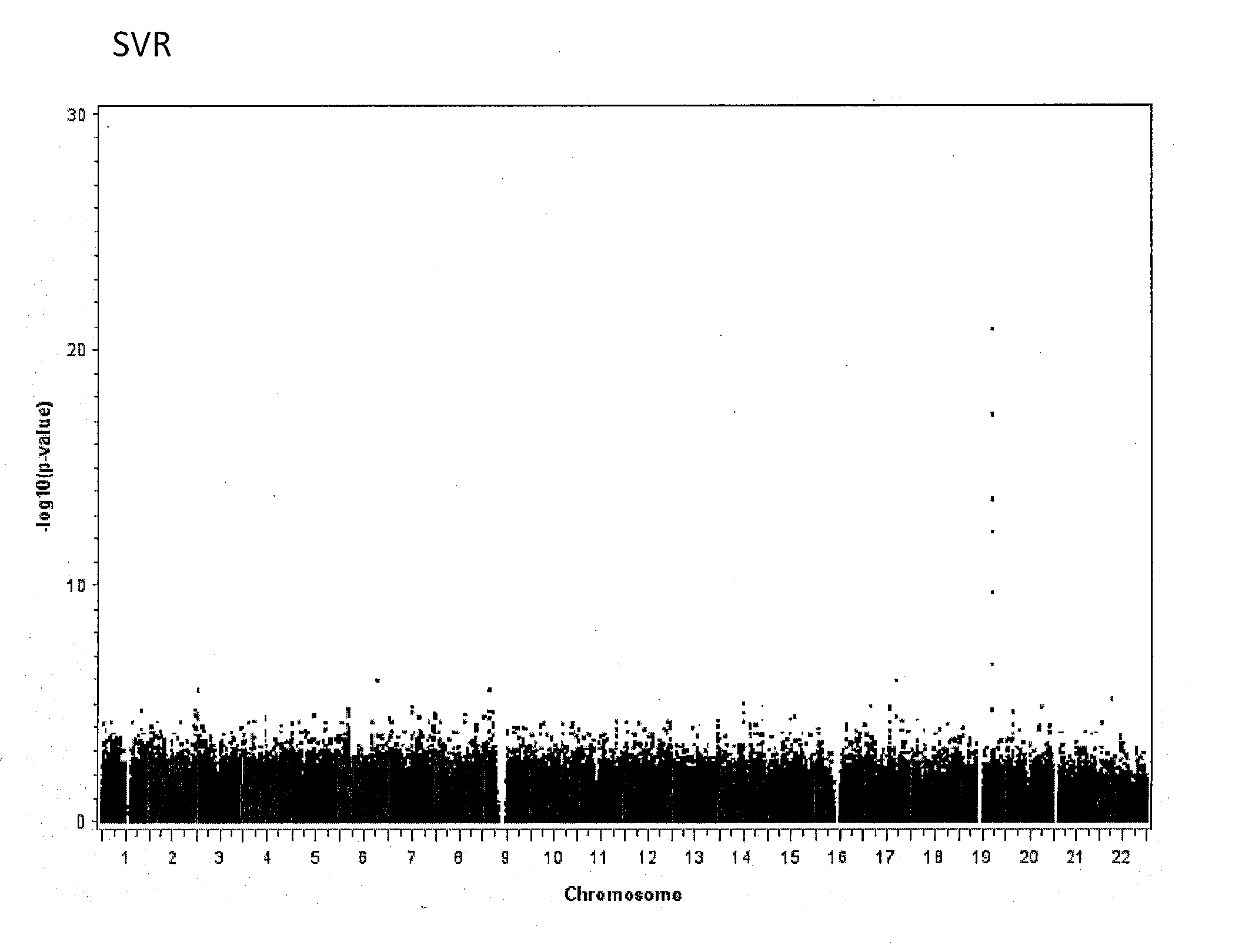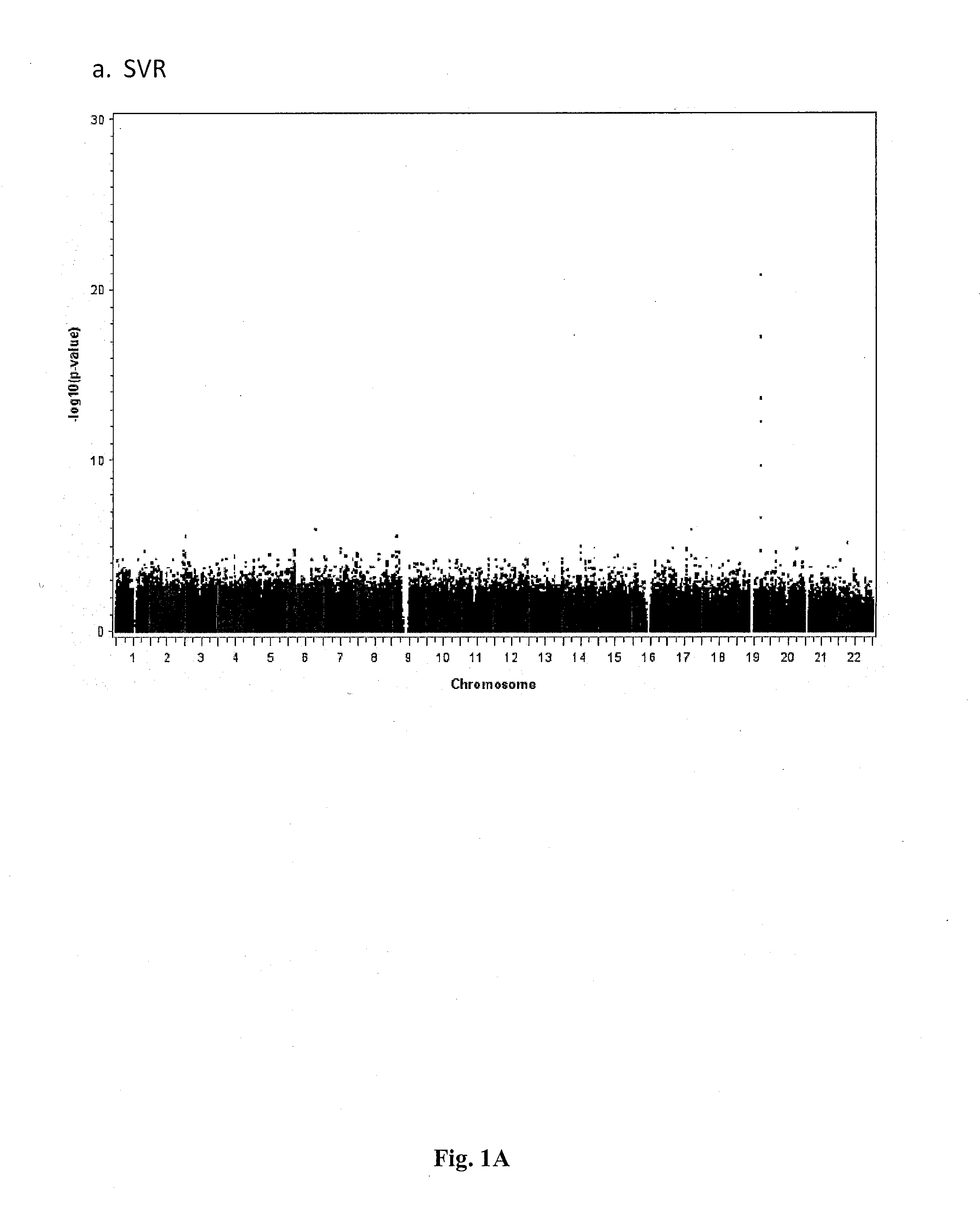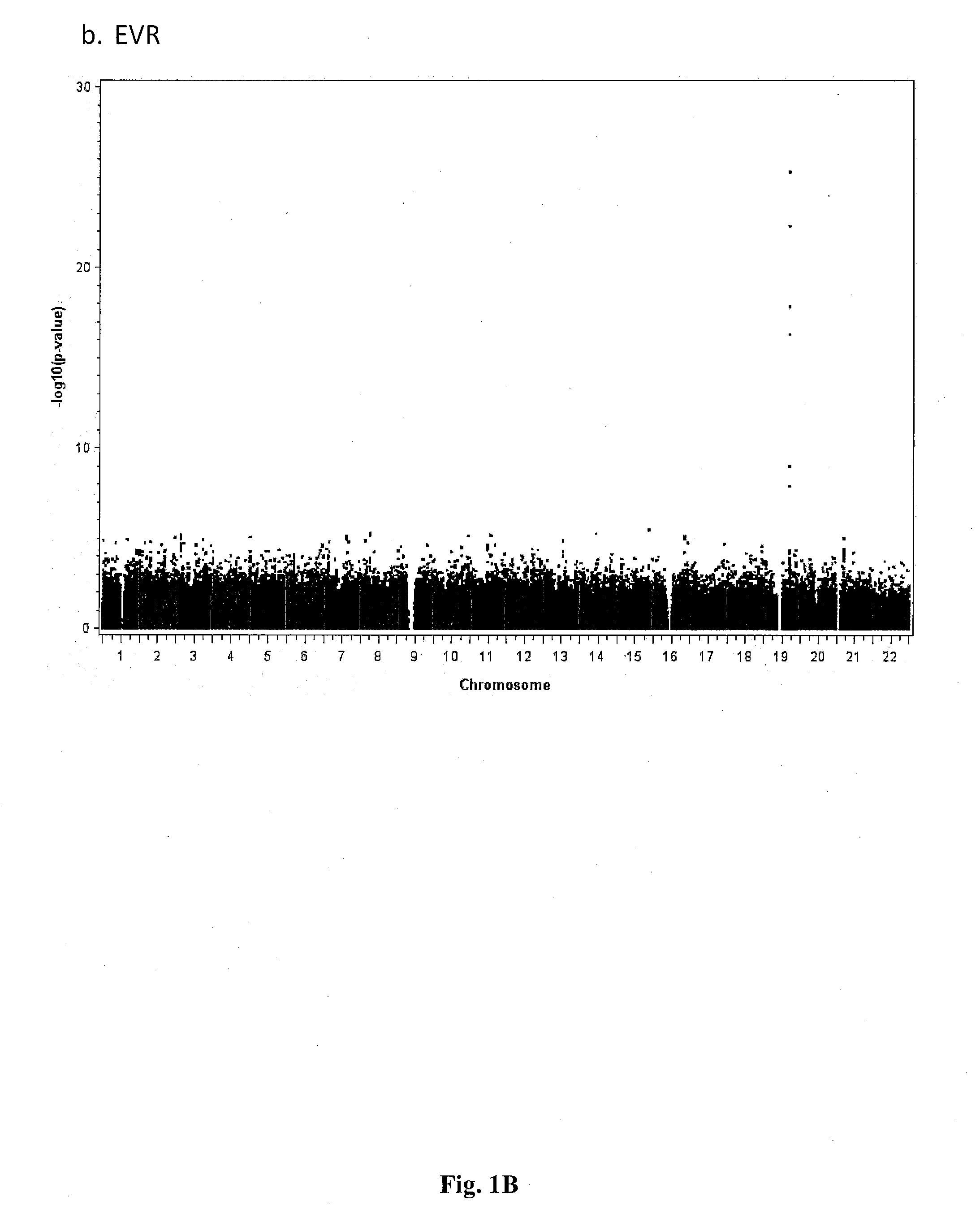Single Nucleotide Polymorphisms That Predict HCV Treatment Outcomes
- Summary
- Abstract
- Description
- Claims
- Application Information
AI Technical Summary
Benefits of technology
Problems solved by technology
Method used
Image
Examples
examples
[0038]Methods
[0039]Patients Sample Collection and Virological End-Points
[0040]Samples were analysed from a subset of patients with chronic hepatitis C enrolled in 2 large, randomised, multinational, phase III trials.3, 15 In one study interferon-naive patients were randomised to 48 weeks of treatment with peginterferon alfa-2a (40 KD) alone or in combination with ribavirin, or conventional interferon alfa-2b plus ribavirin.3 Only non-responders to a previous 12-week course of peginterferon alfa-2b (12 KD) plus ribavirin were eligible for the second trial, which randomised patients to either 48 or 72 weeks of treatment with either a standard or induction dose regimen of peginterferon alfa-2a (40 KD) (all patients received standard dose ribavirin).15 The study design, inclusion and exclusion criteria and primary results of these trials are published elsewhere.3, 15
[0041]Blood samples collected from patients who consented to participate in genetic analyses were stored in the Roche Cli...
PUM
| Property | Measurement | Unit |
|---|---|---|
| Volume | aaaaa | aaaaa |
| Fraction | aaaaa | aaaaa |
| Angle | aaaaa | aaaaa |
Abstract
Description
Claims
Application Information
 Login to View More
Login to View More - R&D
- Intellectual Property
- Life Sciences
- Materials
- Tech Scout
- Unparalleled Data Quality
- Higher Quality Content
- 60% Fewer Hallucinations
Browse by: Latest US Patents, China's latest patents, Technical Efficacy Thesaurus, Application Domain, Technology Topic, Popular Technical Reports.
© 2025 PatSnap. All rights reserved.Legal|Privacy policy|Modern Slavery Act Transparency Statement|Sitemap|About US| Contact US: help@patsnap.com



